Article
Punta Arenas, Chile: The Far Side of the World
Author(s):
Adventurous travelers really can't go much farther than this: Punta Arenas, Chile, which claims to be "the globe's most southern city."
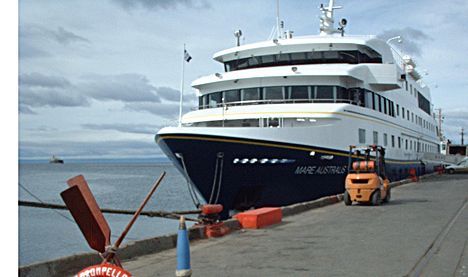
Photography by the authors.
Our ship the M.V. Mare Australis pulls into the dock, and it’s safe to say we are a long way from home. You really can’t go any farther than this. Punta Arenas, Chile, claims to be “the globe’s most southern city.” A bus trip of about 11 hours to the east, however, brings you to Ushuaia which wears the Argentina title of the most southern town in the world.
If you go, you may want to take the bus. Although it’s only 155 miles, airfare is very expensive because it’s an international flight. (Plus, if you bus it you get to meet the locals.) -- it’s soon to be replaced by a more modern vessel, the M.V Stella Australis, in December 2010
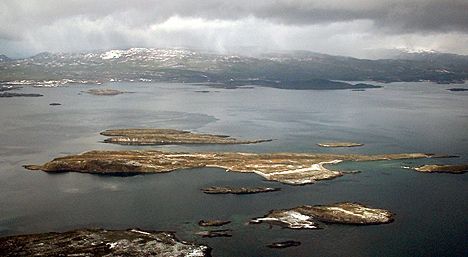
The claims of which location is the farther south are confusing. If you glance at the tip of South America on a map, Ushuaia surely looks closer to the South Pole. But Ushuaia’s population is just 60,000, while Punta Arenas has more than 150,000.
Tourism in the region may have become this country’s best clean and green product, but here it’s clean and white -- and cold. There’s not much drop-in business and impulse shopping in these parts, and most visitors are passing through on their way to tours of Patagonia or cruises to Antarctica.
Punta Arenas, for example, has gone through periods of both fantastic wealth and discouraging poverty. In the old days, the city was a required stop for sailing ships to take on supplies and water — and carry out repairs. Cape Horn has a history of savaging ships, with weather that can make cruise-ship passengers crawl across the cabin floor for their Dramamine.
Ships were no longer required to stop here once the Panama Canal opened in 1914. The city, correspondingly, went into a pronounced downturn. The merchants’ mansions were boarded up and Punta Arenas lost its sparkle. “In the mid-1950s, someone with experience with sheep farms fortunately looked at the vast landscape, had an idea and went to New Zealand,” our guide tells us. “He came back with a flock of sheep. A new industry was born that once again made our residents wealthy.” Unfortunately, the subsequent development of synthetic fibers then killed much of the sheep industry.
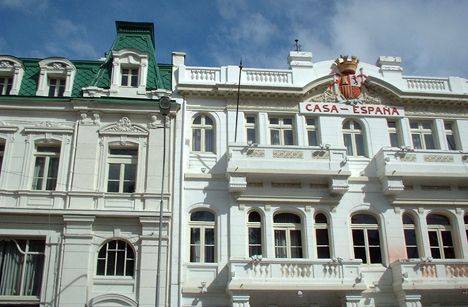
We are standing beside a statue that commemorates this era: it shows a hard-working shepherd with his flock of sheep and his equally hard-working dog.

“Sheep and oil are still important industries here,” our guide continues, “but our ranches suffered in the late 1900s. There was such nationalistic talk of ‘reclaiming our country’ from immigrants and foreign investors that local natives rose up in mobs. They murdered some of the wealthy German ranchero owners. The ranches were then neglected; cattle died, crops withered — and some never recovered.”
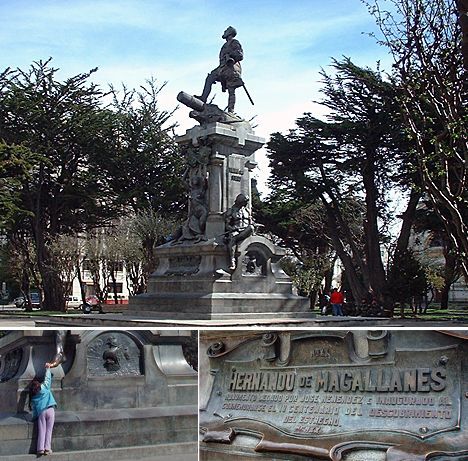
Our guide sighed as we took off to walk the city. We came to another statue, one of Ferdinand Magellan himself, the celebrated Portuguese sailor who in 1520 discovered the main navigation route between Europe and the coasts of the Pacific -- waters now called the Magellan Strait.
A young woman crosses in front of us and reaches up to rub Magellan’s foot. “That is a tradition in our city,” says the guide. “Sailors crossing the Magellan Strait for the first time and facing its frequent dangers often kiss or caress the statue’s foot for good luck. Want to try it?” She smiles encouragingly.
We had done a similar thing in Brussels and in Boston. We nod and go for it, hoping fortune will smile on our bus trips around the tip of South America.
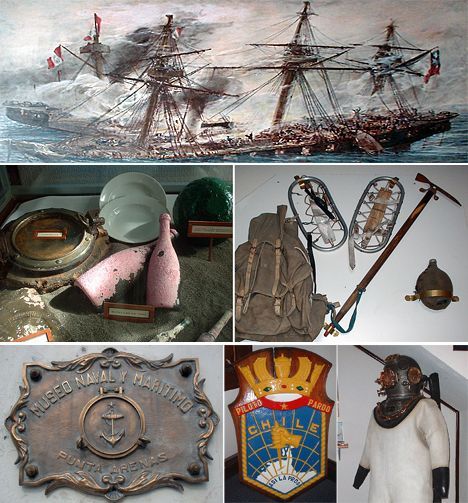
But first we have to explore the navy museum in this city that has so many nautical connections. We study what to the people of Chile is a famous sea battle, we check out polar expedition artifacts and wine bottles reclaimed from a shipwreck; then we depart for a tour of some of the historic mansions and the local cemetery.
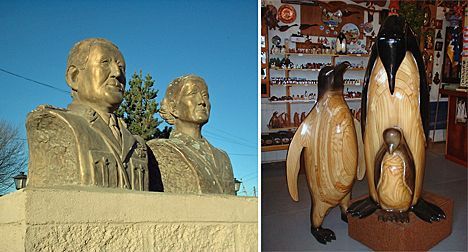
We have another two hours before our bus leaves so we walk past the statue of the two Perons -- that for some reason stands here in Chile not Argentina -- and check out the souvenirs stores. At the end of the bus trip, about 12 hours later, we get a quick look at Ushuaia. It is most photogenic.

Then we turn our back on the direction of the South Pole -- it lies about 2,500 miles behind us. We line up behind locals with their chickens in cardboard boxes, laundry in baskets, and sandwiches in greasy bags. Boy the food smells good! Then we board our bus again for regions as remote but farther north.
The Andersons, who live in San Diego, are the resident travel & cruise columnists for Physician's Money Digest. Nancy is a former nursing educator, Eric a retired MD. The one-time president of the New Hampshire Academy of Family Practice, Eric is the only physician in the American Society of Travel Writers. He has also written five books, the last called The Man Who Cried Orange: Stories from a Doctor's Life.




